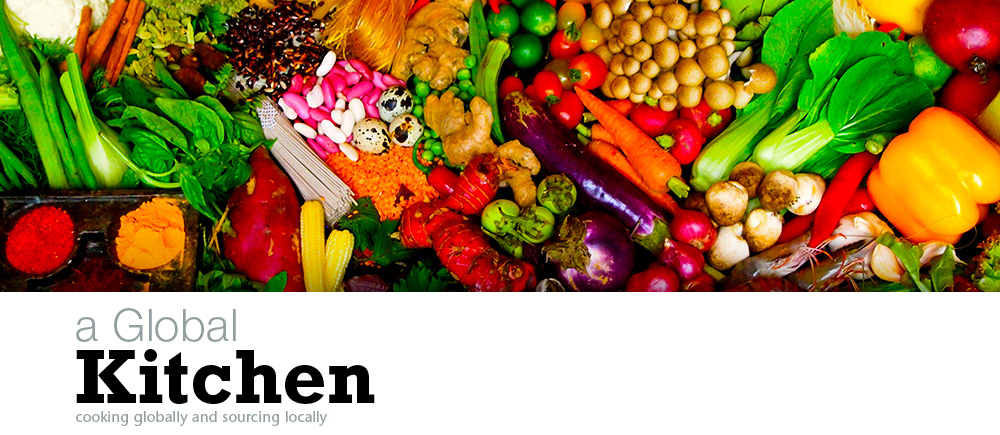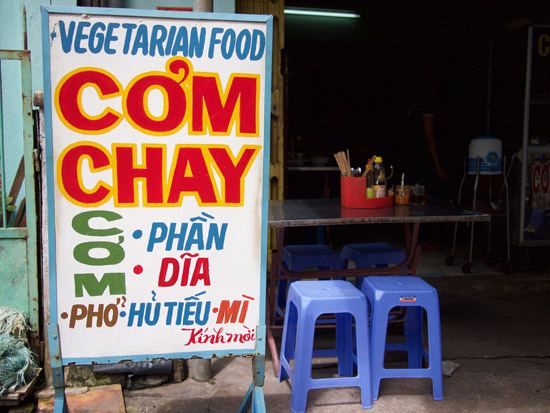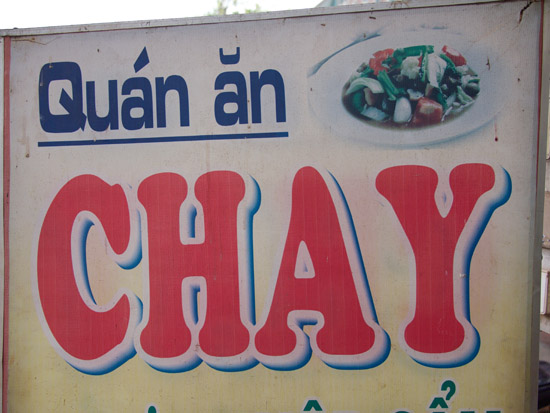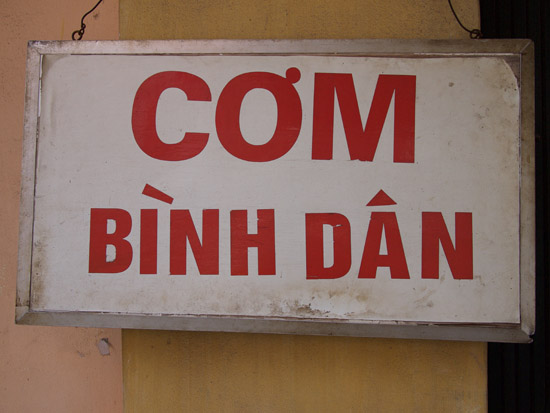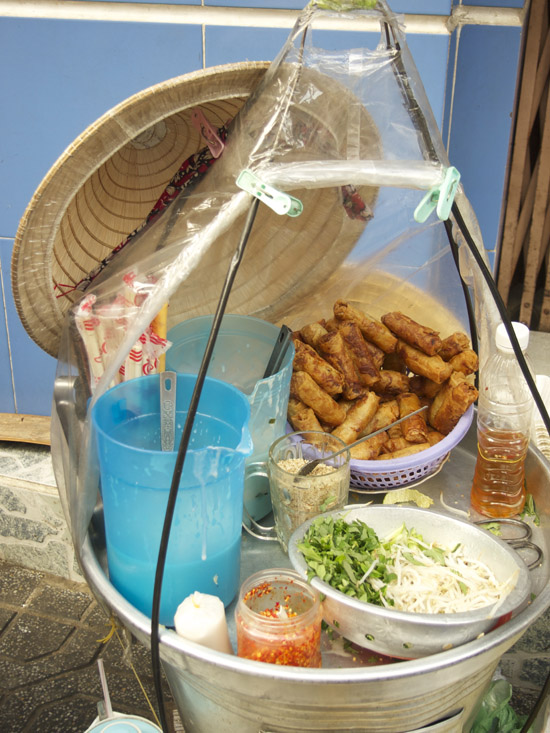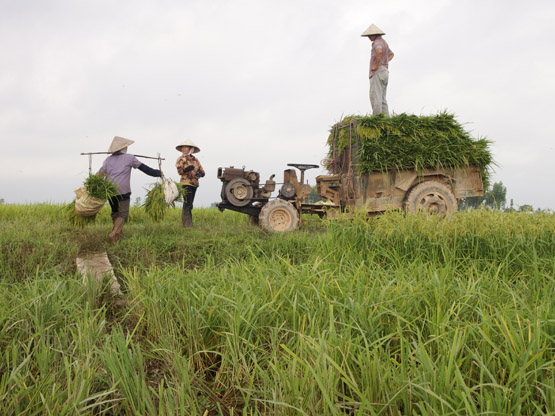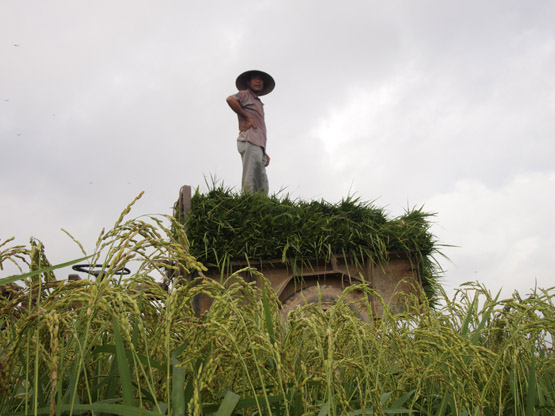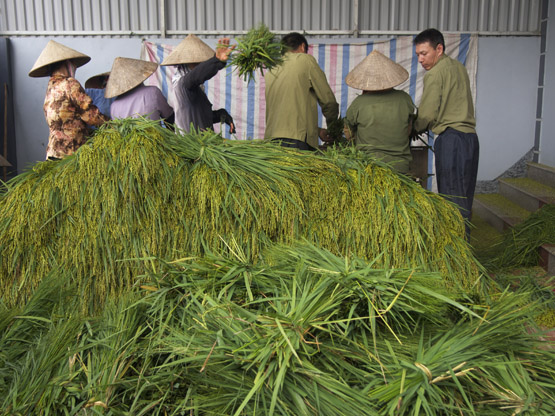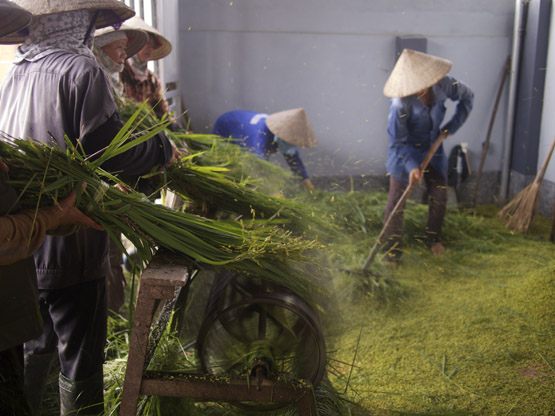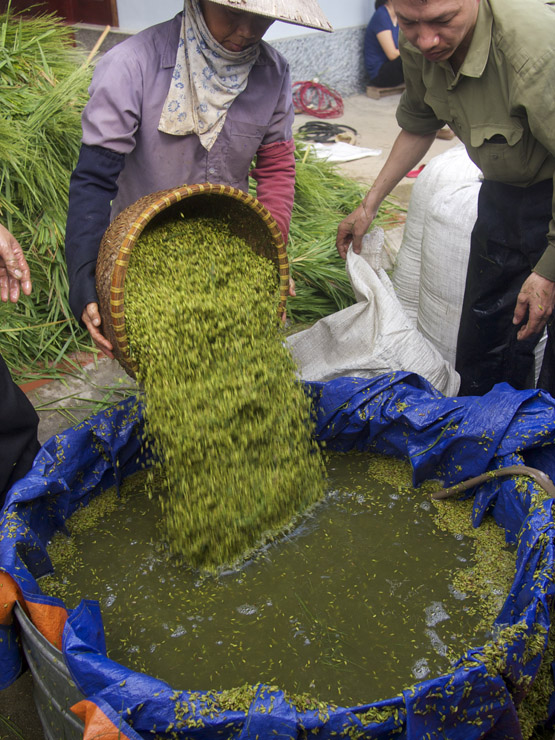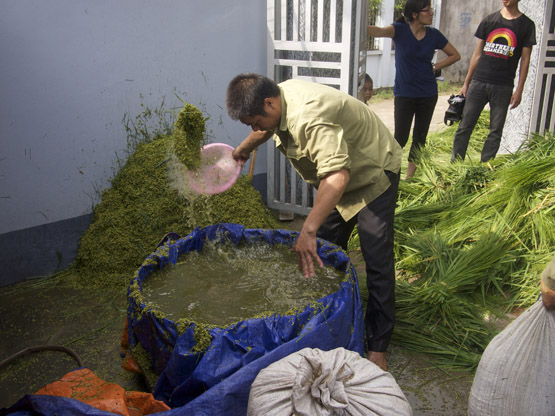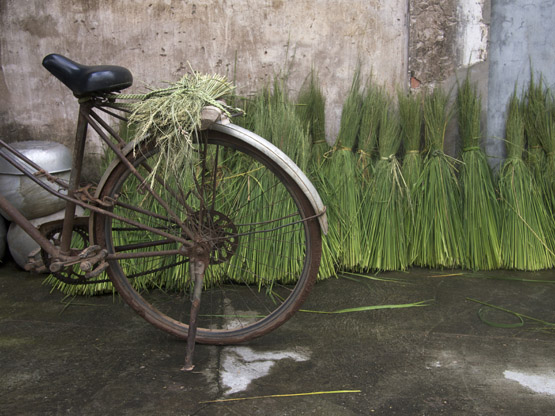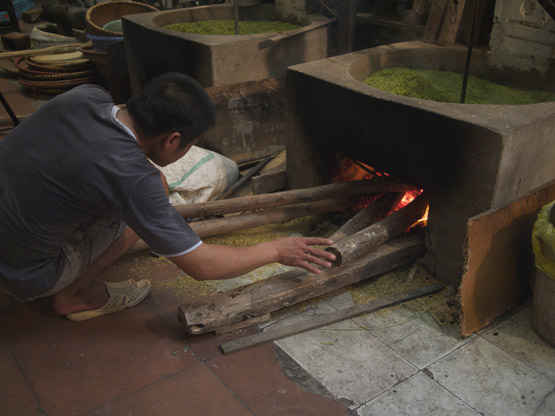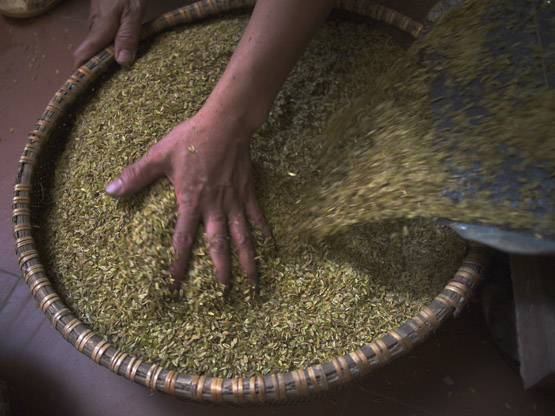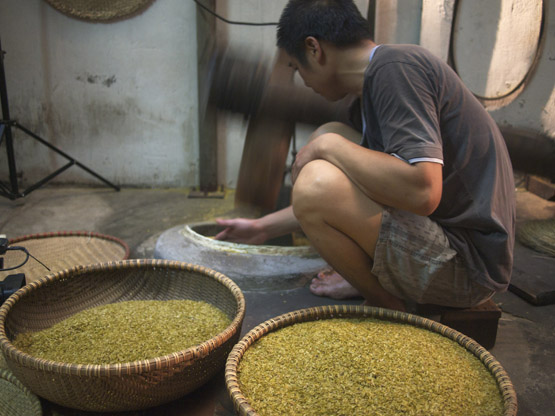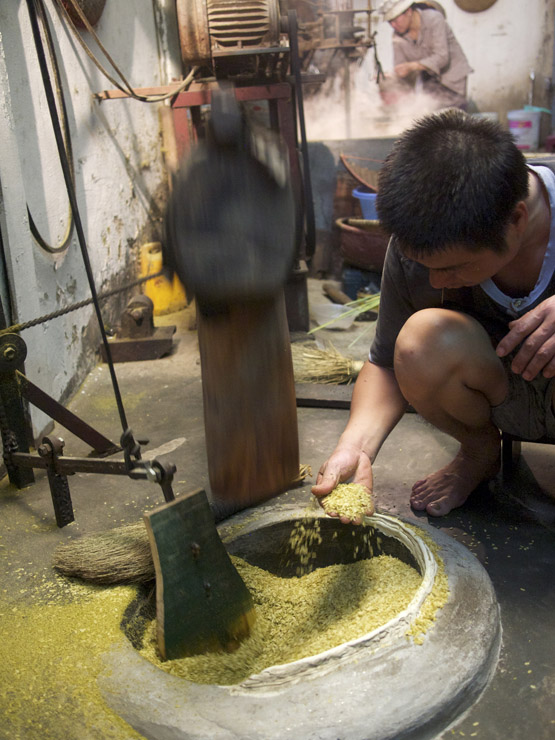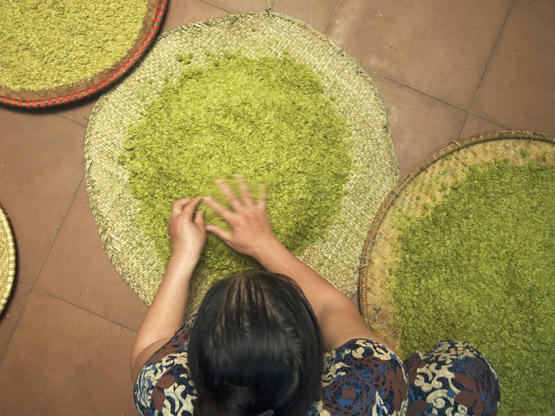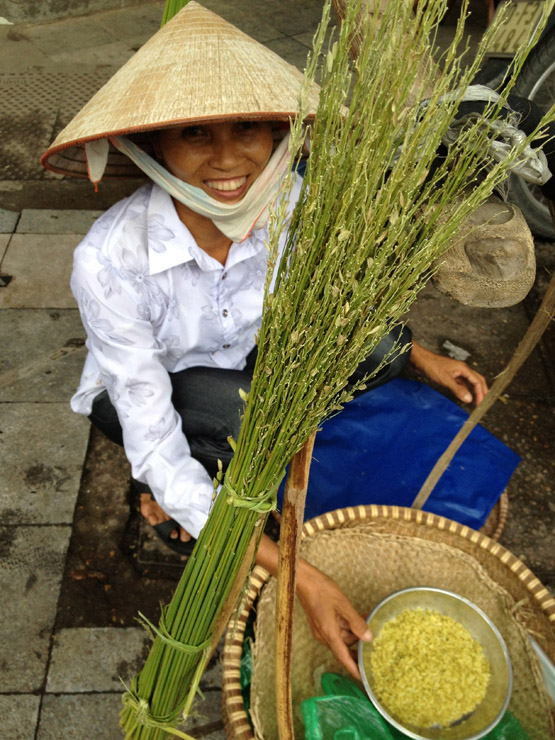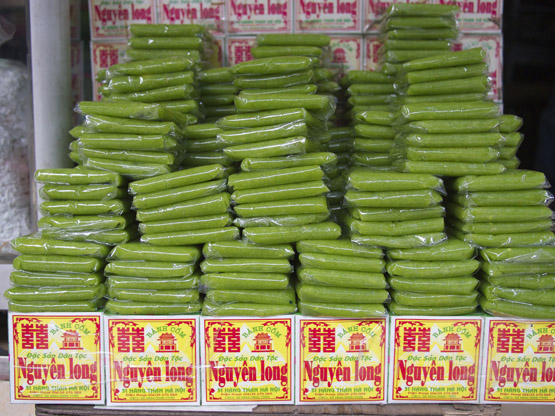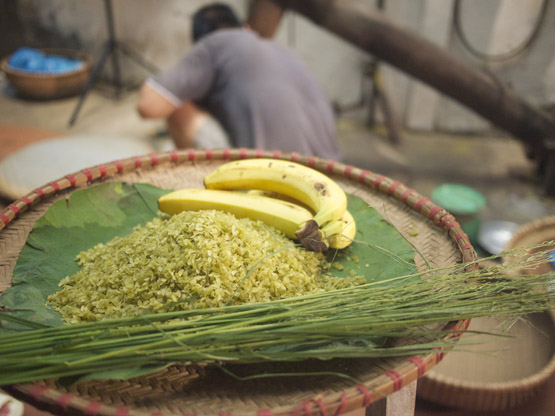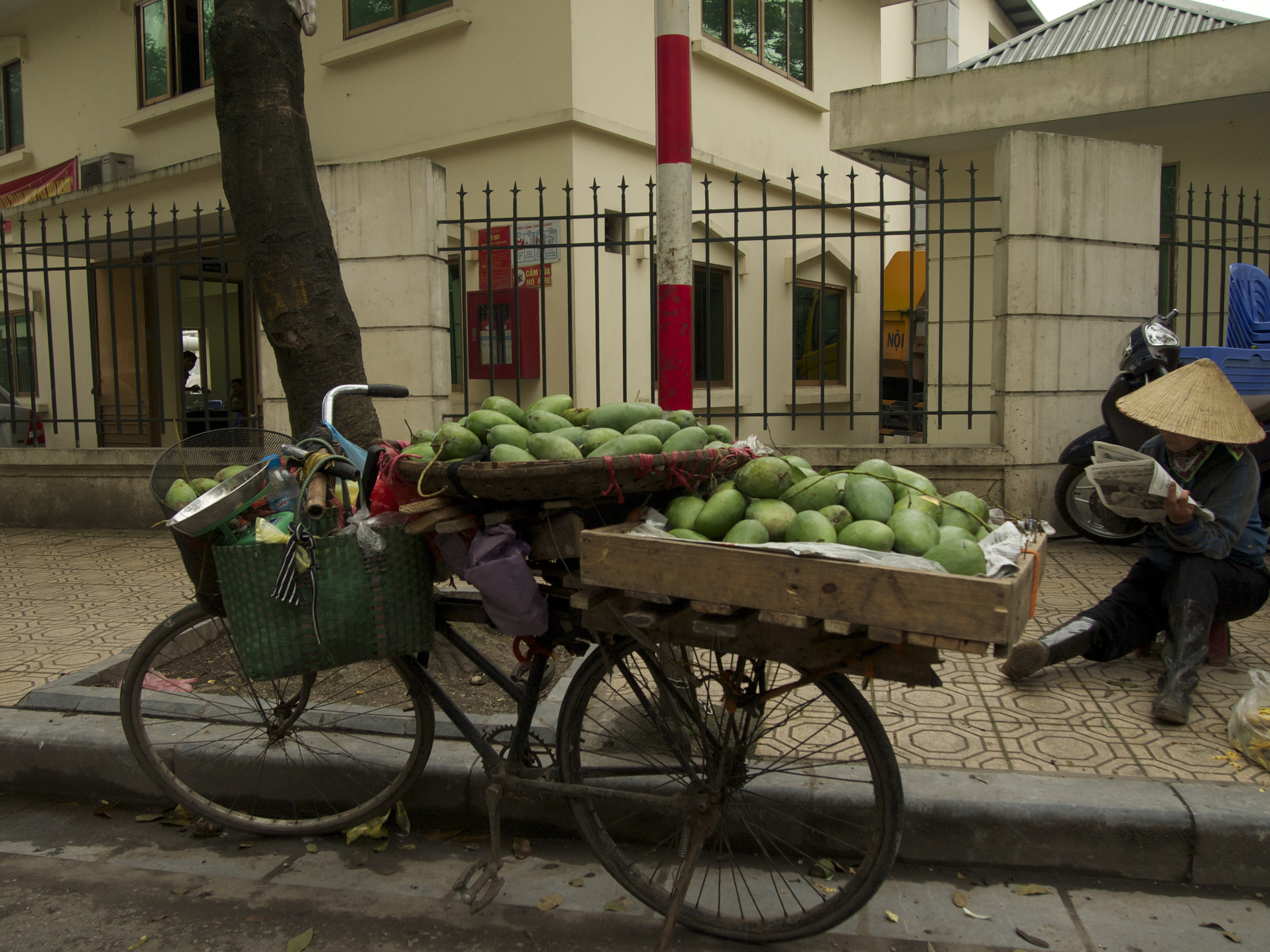I often receive emails from friends, and friends of friends, asking for food and travel tips when visiting Vietnam. I have a standard Word document I refer to and then customize it based on where they’re visiting. I’ll sometimes suggest a local food related souvenir for them to pick up. But I’ve yet to compile a complete list of interesting and unique food souvenirs they should consider picking up on their travels throughout Vietnam. I also wanted to share it here with you.
Most of the items I’m suggesting are compact, small, and lightweight making them easy to pack and to bring home. Before you make your purchase think about how you’re going to transport your luggage. Checking in your bags gives you a lot of leeway of what you can buy. But, if you travel with just a carry on, as I do regularly, you won’t be able to purchase any gifts that are liquid or sharp. Consider packing some zip top bags, medium to large size, or even a small amount of bubble wrap if you generally like to purchase food items or pottery/ glassware when you travel. They’ll help prevent breakage and hopefully contain any spillage or broken packages.
You’ll be able to purchase most of the items in major tourist areas in Hanoi, Hoi An, Hue, and Saigon. Some of them you’ll find on the outskirts of large local wet markets, in grocery stores, or even perhaps airport gift shops.

Marou Chocolate bars with their gorgeous designed packaging.
It may be odd to start off with something you naturally wouldn’t consider as part of the Vietnamese pantry but everyone loves chocolate. Samuel Maruta and Vincent Mourou started making chocolate in an apartment kitchen and now have a flagship shop in District 1 in Saigon (definitely worth a visit!). They are Southeast Asia’s first true Bean to Bar chocolatiers and they work directly with cocoa farmers in six southern provinces surrounding Saigon. To highlight the terroir of the cocoa beans from each province they keep them separate when making their chocolates. The result is chocolate bars with different cocoa percentages (70-78%) and wonderfully intense flavors. My current favorite is Tien Giang 70%.

A variety of Vietnamese teas: artichoke, jasmine, lotus flower. Some you’ll also find in your local Vietnamese grocer.
Artichoke Tea; Jasmine and Lotus Scented Teas
The temperate climate of the hill station town of Da Lat, 300 km north of Saigon, is perfect for growing artichokes, most likely introduced by the French colonialists who flocked to the area in order to retreat from Saigon’s summer heat and torrential rains. At the central market you’ll see vendors with mounds of large perfect artichokes. Although some locals prepare the artichokes in soup or braised dishes they’re mainly dried and processed into a refreshing, deep flavored tea. Grassy, nutty, and naturally sweet it’s a fabulous alternative to other herbal teas.
Green tea enhanced with the scent of jasmine and/or lotus petals are well loved in Vietnam. The delicate, subtle flavor of lotus tea is generally reserved for special occasions or ceremonies. In cafes or restaurants you’ll regularly receive jasmine tea to accompany your coffee or meal. Don’t brew the teas too long (maximum a couple of minutes) otherwise they’ll become too bitter.
Black Pepper from Phu Quoc
Pepper plantations dot the southern island of Phu Quoc. Hand picked black, white, and red peppercorns in Phu Quoc are prized for their warm, pungent, and fruity flavor.
Fish Sauce (Nước mắm)
Phu Quoc is also known for its high quality fish sauce. If you like to live life on the edge and take risks you may want to purchase a bottle of Phu Quoc fish sauce. But buyer beware, if that bottle breaks in your luggage you’ll receive a funky gift coming off the baggage carousel, not to mention some puzzled looks from fellow passengers, and the challenge of removing the pungent fishy smell from your clothes and luggage. A safer bet is to purchase an excellent product that’s already been exported, like Red Boat Fish sauce, to the United States.
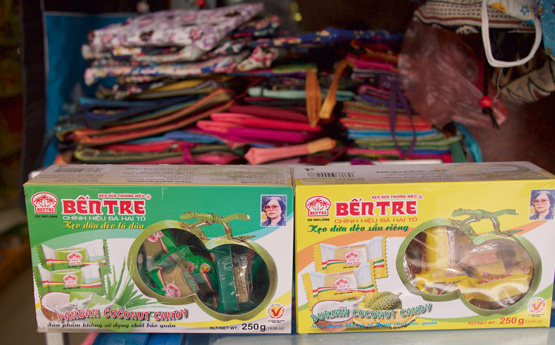
Purchase these delicious coconut treats for family and friends.
Coconut Candy -Pandan or Durian flavored (Kẹo dừa)
Our kids love these candies, particularly the pandan coconut flavor. Hailing from Ben Tre province in the Mekong delta they’re great to purchase for friends and family who enjoy small sweet bites. Let them know the very thin wrapper around the candy is edible rice paper. Otherwise, they’ll spend a considerable amount of time trying to peel it off.
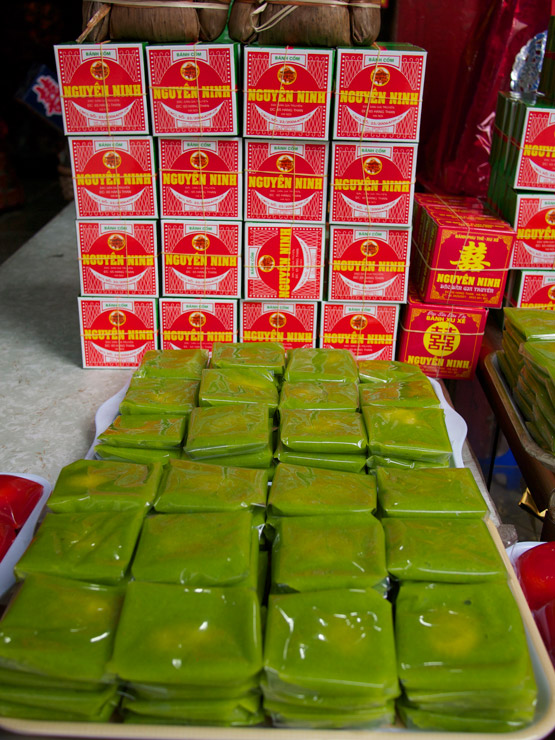
One of the shops on Hàng Than in Hanoi that sell young green rice cakes, bánh cốm.
Young Green Rice Cakes (Bánh cốm)
The appearance of roving vendors selling young green rice on the streets of Hanoi indicates autumn’s arrival in northern Vietnam. For over a century families have been making a variety of treats using the young green rice flakes. You’ll find a number of shops selling the thin, bright green squares (some filled with mung bean or coconut) along Hàng Than street in Hanoi.

Coffee sourced from local and indigenous Vietnamese farmers.
Coffee (Cà phê)
Vietnam is the second largest producer of coffee in the world, mainly the robusta variety. But there are some optimistic Vietnamese coffee lovers who are working with farmers to increase the production of arabica beans to make a more refined flavored coffee. Some companies, like Oriberry Coffee in Hanoi, operate as a social enterprise to help indigenous and ethnic minorities peoples in rural parts of Vietnam. They work with small farmers and offer guidance and a market for their products. Alternatively, purchase some Trung Nguyen coffee, Vietnam’s largest coffee producer, from one of its many outlets established throughout the country.
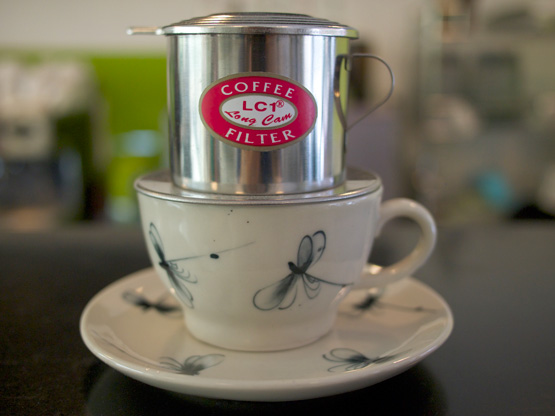
A Vietnamese coffee filter is called a phin and sits on top of a mug for the coffee drips into it.
To go along with the coffee you should purchase a Vietnamese drip coffee filter, called a phin. It’s easy to use and perfect for making individualized coffees. Purchase a couple of them so you can enjoy a Vietnamese filter coffee – with or without condensed milk – with or without ice – with a friend as you share stories about your Vietnam adventure.

Hand made and Hand Painted Vietnamese Pottery from Bat Trang village outside of Hanoi.
Pottery and Enamel
All throughout the country there are villages that specialize in making hand made pottery. Some designers and discerning shopkeepers work with the potters to come up with innovative designs and unique decorative, hand painted features. You may find a new favorite coffee mug or teacup or several large bowls to serve your homemade noodle soups in. If you’re lucky you may happen upon a shop selling some older pottery or enamel from the 1980s Subsidy Period (Thời bao cấp) which have some great minimalist character items (albeit from a time of enormous hardship for much of the Vietnamese population).

The multipurpose Vietnamese vegetable peeler.
Multi-Purpose Vegetable Peeler
Shops or stalls selling kitchenware are often located not far from the vegetable vendors in local wet markets. Seek out these peelers. You can peel, grate, shred or make decorative cuts with them. Buy several peelers. They’re cheap and if you’re aggressive when using them they break easily.
The Vietnamese are extremely resourceful cooks and have figured out ways to use all parts of vegetables. This innovative contraption, with a long stainless stem needle and top with six to eight sharp blades, easily splits the somewhat tough stems of water spinach into thin, delicate strands that become great additions to salads or noodle soups. Again, buy several of them.
Rustic Vegetable Peeler Knives (Dao bào)
These knives look super cool, especially when you see a skilled market vendor expertly slicing carrots, cabbage, green mangoes, or green papayas in the wet markets. Unless you’re well versed with kitchen knives and well coordinated it doesn’t make sense to buy one to use in your kitchen.

Look at stores around the wet markets for these handy farmer’s market shopping bags.
Farmer Market Shopping Bags
These colorful woven plastic bags, available in different sizes, are great to use when you go shopping at your farmer’s market. They’re stylish, sturdy, and much easier to clean than cloth bags. If any dirt from freshly harvested vegetables makes it’s way to the bottom of the bag simply give it a rinse and air dry.

Who can resist a glass of fresh beer in one of Hanoi’s unique beer glasses made from recycled glass.
Hanoi Beer Glasses
The cloudy class pint glasses, hand blown and made from recycled glass, are unique to Hanoi’s beer halls, bia hơi. I think they make a great gift for any craft beer connoisseur. Sold only in the Hanoi area.
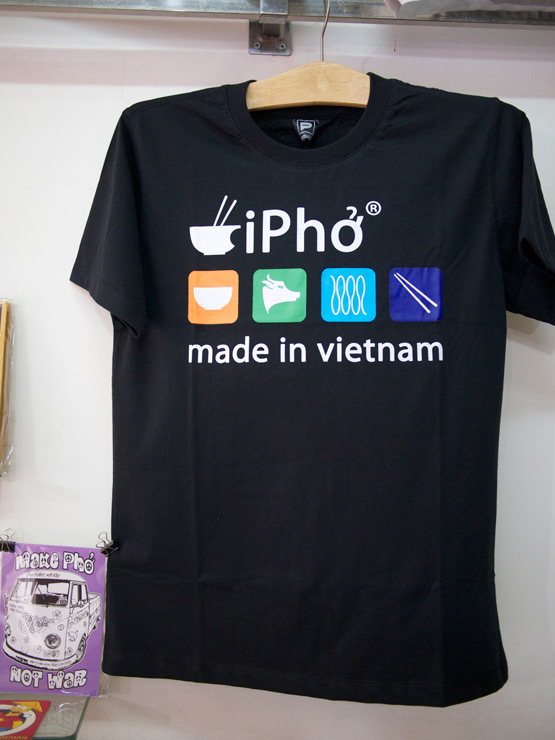
Many of the food themed t-shirts will have puns or slogans on them. Notice “Make Pho Not War” slogan, bottom left.
Food Themed T-shirts
You can find fun, punny t-shirts, many highlighting Vietnam’s foods and drinks, in the main tourist areas in the larger cities. Franchised shops like Gingko, Bambou, or independent shops from young designers offer more stylish, unique t-shirts. The sizing of the shirts is often not in sync with Western sizes so you’ll likely need to purchase shirts two sizes up to get the right fitting (ie If medium is your usual size, XL may be the correct fit).
Food Themed Dresses
A requirement for any fashionista travelling to Hanoi is a visit to Chula. Spanish designers Diego and Laura sell vibrant creative clothing (primarily dresses and jackets, and soon a men’s shirt and jacket line, yay!) that celebrate all aspects of Vietnamese life and culture. Chula’s food themed collection is funky and delicious to wear and to look at.

This food themed propaganda poster highlights taking care and developing bee populations.
Propaganda Posters
From the middle to the end of the 20th century Vietnamese revolutionary forces used propaganda posters to encourage people to fight against and prevent French and American colonialism. Some posters focused on taking up arms, industry, and education. Some of the most striking posters, design wise, are the ones insinuating that increased food production would lead to prosperity for the country.
POST TRAVEL GIFTS
If you forgot to buy something for someone, want to buy more of the food items, or didn’t have the room/ weight for some souvenirs head to the nearest Vietnamese or Asian grocer in your area. Alternatively, you could order some items, like the maps and books I’ve suggested below, online.
Hand Drawn Vietnamese Food Maps
My friend, Jodi of Legal Nomads, eats soup for a living. The bright, sour, and spicy flavors of canh chua , a southern Vietnamese soup, inspired her to live and travel in Vietnam. On her website Jodi sells unique hand food drawn maps, printed on posters, t-shirts, and tote bags, inspired by the delicious foods of Vietnam. They’re a perfect gift for a friend, or even yourself, who raved about the fabulous dishes they ate on their Vietnamese vacation.
BOOKS
Graham Holliday was one of the earliest English language bloggers to write about Vietnam’s culinary scene. He’s chronicled his immersive journey in the rich and evocative Eating Việt Nam: Dispatches from a Blue Plastic Table. Reading this will have you planning another trip back to Vietnam or, at the least, make you head to your closest Vietnamese restaurant to satisfy your instant craving for many of the dishes he describes in his book.
Cookbooks
You’ve had some fabulous meals on your trip and now want to recreate some new favorite dishes in your own kitchen. Look to any books by Andrea Nguyen, the doyenne of Vietnamese cooking in North America – her most recent is a deep dive in to phở. Or pick up Australian chef Tracey Lister’s cookbooks that highlight Vietnam’s street foods or regional dishes. If you’re vegetarian or vegan you can pre-order my first cookbook, Vegetarian Việt Nam (to be released in March 2018).
Happy shopping!
